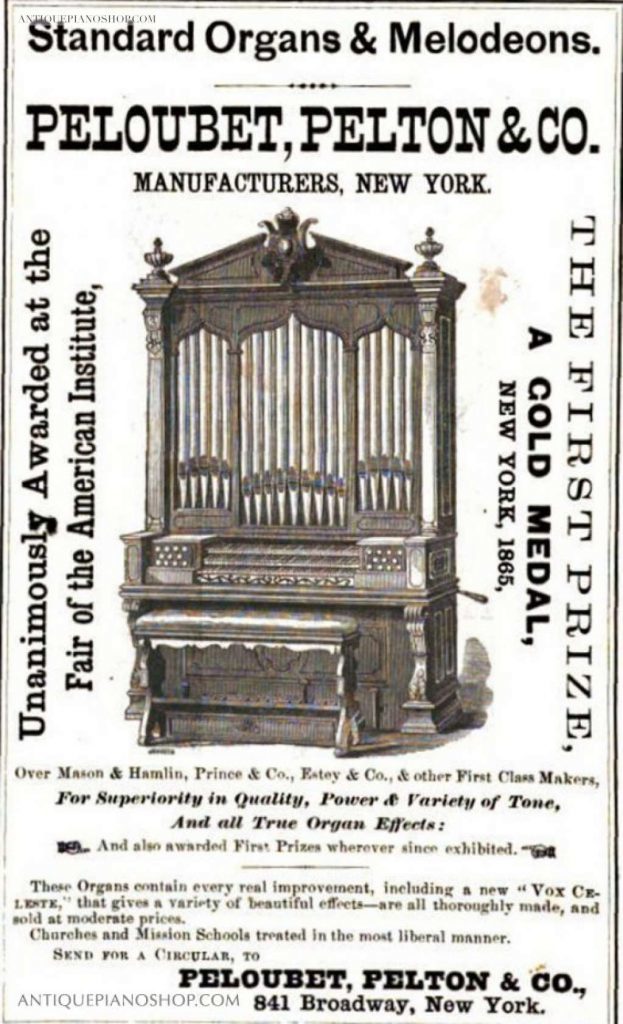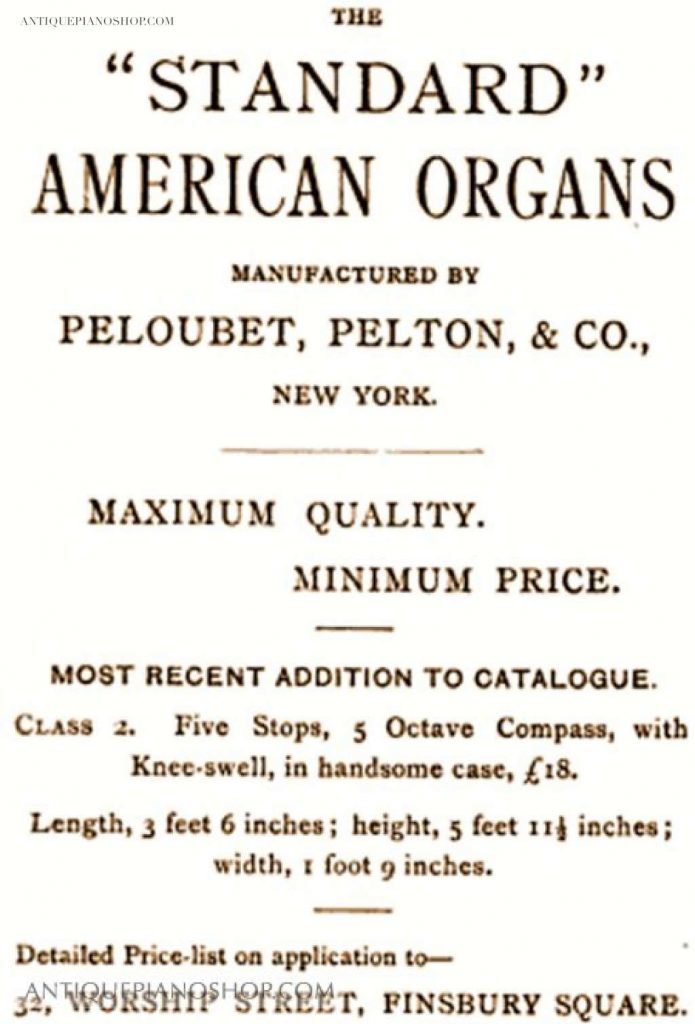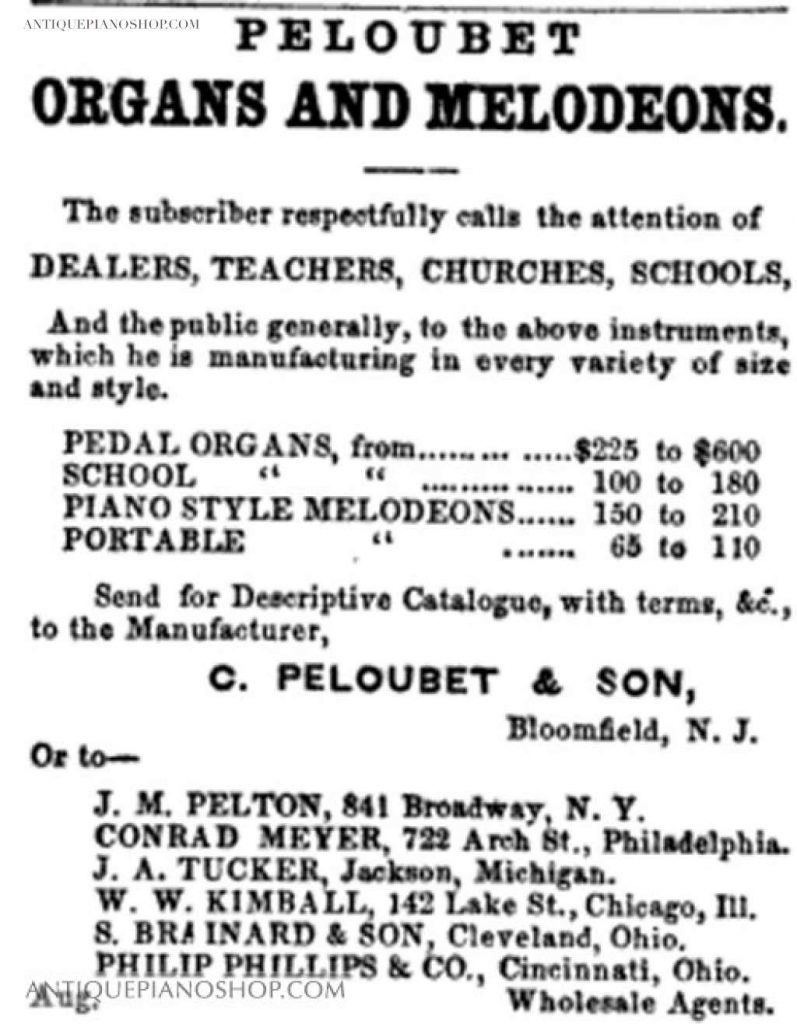Peloubet
Louis A. Peloubet was one of the more colorful and historical men in America’s 19th Century musical industry. Louis A. Peloubet was born in France in 1764, and fought with the King’s army during the French Revolution. He was tried and sentenced to death by a revolutionary tribunal, but managed to escape to Germany before his execution. While in Germany, Peloubet apprenticed as a musical instrument maker, specializing in wood-wind instruments. In 1803 he immigrated to New York City where went into partnership with another French refugee by the name of Monniot, establishing the firm of “Monniot & Peloubet”. Monniot & Peloubet built all types of musical instruments including wood-winds, piano-fortes, and harpsichords. Their firm was located at 253 Broadway, New York City.
In 1805 Louis Alexander Peloubet changed his name to Joseph Peloubet, and he continued building musical instruments of all kinds for the rest of his career. He is listed as being in business in many cities over the years, including Philadelphia, Albany, and Hudson New York. It seems that Peloubet retired in 1812, and died in 1833.
Louis Michel Francois Peloubet, also known as “Chabrier Peloubet”, was the son of Louis Alexander Peloubet. Having learned instrument making from his father, Chabrier Peloubet became visible in New York’s musical industry in about 1829. For the first several years he built flutes and wood wind instruments, and he often won awards for the instruments he exhibited. In 1836 Chabrier Peloubet moved his workshop to Bloomfield, New Jersey. Peloubet began building melodeons in about 1842 and cabinet organs around 1848. In 1849, the firm was changed to “C. Peloubet & Son” when his son Jarvis Peloubet came into partnership. Peloubet’s factory burned in 1869 and a new, modernized “state of the art” factory was built immediately.
In 1873 J. M. Pelton was admitted into partnership, and the firm was then called “Peloubet, Pelton & Company'”. Shortly thereafter, the firm’s name was again changed to “Peloubet & Pelton Standard Organ Company”. J. M. Pelton left the firm in about 1882 and Peloubet continued several operations as “Peloubet Standard Organ Company” as well as “Peloubet Columbian Organ Company” and “Peloubet & Sons”. By this time, their offices were located at 841 Broadway, New York City. Chabrier Peloubet died in 1885 and his son Jarvis continued operations. In 1888 the firm introduced the “Reed Pipe Top Organ”. Jarvis Peloubet sold the company to Lyon & Healy of Chicago in 1890.
INSTRUMENT CATALOGS & EPHEMERA
Can you find your instrument listed in these antique catalogs?
Peloubet, Pelton & Company Advertisements
19th Century Advertisements For Peloubet, Pelton & Company






